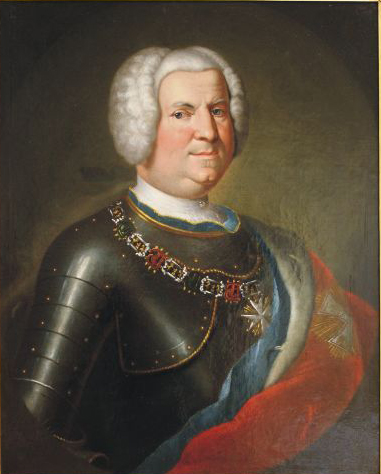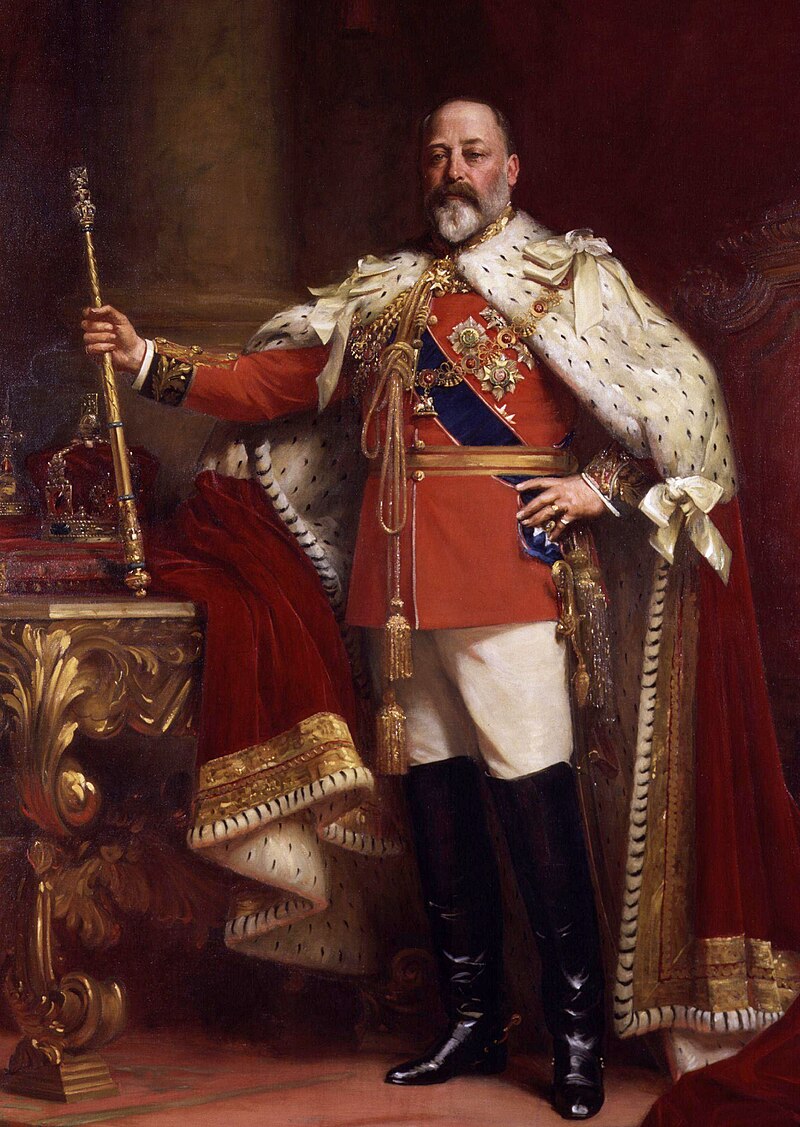by Susan Flantzer
Principality of Schwarzburg-Sondershausen: The County of Schwarzburg was a state of the Holy Roman Empire from 1195 to 1595, when it was partitioned into Schwarzburg-Rudolstadt and Schwarzburg-Sondershausen. The new counties remained in the Holy Roman Empire until its dissolution. In 1697, the County of Schwarzburg-Sondershausen was elevated to the Principality of Schwarzburg-Sondershausen. The County of Schwarzburg-Rudolstadt was elevated to the Principality of Schwarzburg-Rudolstadt in 1710.
The death of Karl Günther, Prince of Schwarzburg-Sondershausen without an heir in 1909 caused the Principalities of Schwarzburg-Rudolstadt and Schwarzburg-Sondershausen to be united under Günther Victor, Prince of Schwarzburg-Rudolstadt in a personal union. Following his succession in Sondershausen, Prince Günther Victor dropped the name Rudolstadt from his title and assumed the title Prince of Schwarzburg.
At the end of World War I, Prince Günther Victor was the last German prince to renounce his throne, abdicating on November 22, 1918. He made an agreement with the government that awarded him an annual pension and the right to use several of the family residences. The territory that encompassed the Principalities of Schwarzburg-Rudolstadt and Schwarzburg-Sondershausen is now located in the German state of Thuringia.
*********************

Credit – www.geni.com
The grandson of Christian Wilhelm, Prince of Schwarzburg-Sondershausen, Christian Günther III, Prince of Schwarzburg-Sondershausen was born on June 24, 1736. He was the second but the eldest surviving of the four sons and the fourth of the sixth children of Prince August of Schwarzburg-Sondershausen (link in German) and Charlotte Sophie of Anhalt-Bernburg. His father had been given the Schloss Ebeleben (link in German) as his residence and Christian Günther spent a happy childhood there.
Christian Günther had five siblings but only two siblings survived childhood:
- Friederike Auguste (1723 – 1725), died in childhood
- Charlotte (1732 – 1774), married Heinrich II, Count of Reichenbach-Goschütz, had sixteen children
- Christian Wilhelm (1734 – 1737), died in childhood
- Johann Günther (1737 – 1738), died in infancy
- August (1738 – 1806), married Christine Elisabeth Albertine of Anhalt-Bernburg, had four children

Christian Günther and his wife Charlotte Wilhelmine; Credit – Europena Collections (de) Christian Günther III., Fürst von Schwarzburg-Sondershausen – https://www.europeana.eu/item/92062/BibliographicResource_1000126071681. Österreichische Nationalbibliothek – Austrian National Library – http://www.bildarchivaustria.at/TELRequest.aspx?p_ImageID=5229709. Public Domain Mark – http://creativecommons.org/publicdomain/mark/1.0/
On February 4, 1760, Christian Günther III married Charlotte Wilhelmine of Anhalt-Bernburg (1737-1777), daughter of Victor Friedrich II, Prince of Anhalt-Bernburg and his second wife Albertine of Brandenburg-Schwedt.
The couple had six children:
- Günther Friedrich Karl I, Prince of Schwarzburg-Sondershausen (1760 – 1837), married Caroline of Schwarzburg-Rudolstadt, had two children including Günther Friedrich Karl II, Prince of Schwarzburg-Sondershausen
- Catharina Charlotte Friederike Albertine (1761 – 1801), married Prince Friedrich Christian Carl Albert of Schwarzburg-Sondershausen, had one child Guntherina of Schwarzburg-Sondershausen who married her uncle (see below)
- Günther Albrecht August (1767 – 1833), unmarried
- Caroline Auguste Albertine (1769 – 1819), Deaness of the Protestant Herford Abbey
- Albertine Wilhelmine Amalie (1771 – 1829), married Duke Ferdinand of Württemberg, divorced, no children
- Johann Carl Günther (1772 – 1842), married his niece Guntherina of Schwarzburg-Sondershausen, had four children
On November 6, 1758, 22-year-old Christian Günther succeeded his uncle Heinrich XXXV, Prince of Schwarzburg-Sondershausen because his uncle was unmarried and had no children, and Christian Günther III’s father had died in 1750. Christian Günther was immediately faced with problems from his uncle’s reign. Heinrich XXXV is considered the most controversial Prince of Schwarzburg-Sondershausen. He was emotionally distant from his subjects and reveled in ostentatious displays of wealth. The Seven Years’ War (1756 – 1763), a global conflict for supremacy between Great Britain and France, began during Heinrich’s reign and saw disputes between Prussia and Austria which affected the other Germanic monarchies. Heinrich had given no financial support to any forces in the war or any of his affected subjects. He had preferred to spend his money on luxuries. Christian Günther aptly dealt with corruption in the government and the effects of the Seven Years’ War. Unlike his uncle, he was considered frugal in both government and family affairs.
The Blue Hall at Schloss Sondershausen; Credit – Wikipedia
During the reign of Christian Günther, there were extensive building and renovation projects. At the Schloss Sondershausen (link in German), he had the north wing extended and added the west wing with the famous Blue Hall in the Rococo style. The blue and white color scheme was used in honor of the state colors of Schwarzburg-Sondershausen. Christian Günther particularly loved the Schloss Ebeleben (link in German) where he had spent his childhood. He had the Schloss expanded and completely redesigned the park which became famous for its statues, fountains, and flowers.

The Deer Fountain at Schloss Ebeleben; Credit – Von CTHOE – Eigenes Werk, CC BY-SA 4.0, https://commons.wikimedia.org/w/index.php?curid=62575314
Charlotte Wilhelmine predeceased her husband Christian Günther, dying in 1777, aged 41, but her burial site is unknown. Christian Günther III, aged 58, died on October 14, 1794, and his burial site is also unknown. He was succeeded by his eldest son Günther Friedrich Karl I.
This article is the intellectual property of Unofficial Royalty and is NOT TO BE COPIED, EDITED, OR POSTED IN ANY FORM ON ANOTHER WEBSITE under any circumstances. It is permissible to use a link that directs to Unofficial Royalty.
Schwarzburg-Sondershausen Resources at Unofficial Royalty
- Unofficial Royalty: Principality of Schwarzburg-Sondershausen Index
- Unofficial Royalty: Royal Burial Sites of the Principality of Schwarzburg-Sondershausen
Works Cited
- De.wikipedia.org. 2020. Christian Günther III. (Schwarzburg-Sondershausen). [online] Available at: <https://de.wikipedia.org/wiki/Christian_G%C3%BCnther_III._(Schwarzburg-Sondershausen)> [Accessed 11 November 2020].
- En.wikipedia.org. 2020. Christian Günther III, Prince Of Schwarzburg-Sondershausen. [online] Available at: <https://en.wikipedia.org/wiki/Christian_G%C3%BCnther_III,_Prince_of_Schwarzburg-Sondershausen> [Accessed 11 November 2020].
- Flantzer, Susan, 2020. Royal Burial Sites Of The Principality Of Schwarzburg-Sondershausen. [online] Unofficial Royalty. Available at: <https://www.unofficialroyalty.com/royal-burial-sites/german-royal-burial-sites/royal-burial-sites-of-the-principality-of-schwarzburg-sondershausen/> [Accessed 9 November 2020].




























